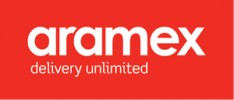Filter interviews by
GLS Group Interview Questions and Answers
GLS Group Interview Experiences
2 interviews found
I was interviewed before Nov 2023.
(2 Questions)
- Q1. Introduce yourself
- Q2. Why you choose our company
- Ans.
I chose your company because of its reputation for innovation and commitment to employee development.
Impressed by company's track record of innovation
Attracted to opportunities for professional growth and development
Positive reviews from current employees
Alignment with company values and culture
(1 Question)
- Q1. Puzzle and cv interest family background
(1 Question)
- Q1. About core and projects
Interview Preparation Tips
Management Trainee Interview Questions asked at other Companies
Jobs at GLS Group
Top trending discussions






Interview questions from similar companies

P2P Accounts Payable Executive Interview Questions & Answers
Accentureposted on 6 Jan 2025
I applied via Naukri.com and was interviewed in Dec 2024. There was 1 interview round.
(5 Questions)
- Q1. How many variance in sap?
- Ans.
The number of variances in SAP can vary depending on the specific processes and transactions being analyzed.
The number of variances in SAP can be influenced by factors such as data entry errors, system glitches, or discrepancies in invoice processing.
Variances in SAP may be identified through reconciliation processes, exception reports, or manual reviews of accounts payable transactions.
Examples of variances in SAP inc...
- Q2. We cac explain the all accounts receivable and accounts payable
- Ans.
Accounts receivable and accounts payable are two important aspects of a company's financial operations.
Accounts receivable refers to money owed to a company by its customers for goods or services provided.
Accounts payable refers to money owed by a company to its suppliers or vendors for goods or services received.
Accounts receivable is an asset on the balance sheet, while accounts payable is a liability.
Managing accoun...
- Q3. What is the cost element and cost center?
- Ans.
Cost element and cost center are key concepts in accounting for tracking and allocating costs within an organization.
Cost element refers to the specific types of costs incurred by an organization, such as materials, labor, or overhead.
Cost center is a specific department, team, or function within an organization that is responsible for incurring costs.
Cost elements are assigned to cost centers to track and allocate cos...
- Q4. How many we have currencies in sap?
- Ans.
SAP supports over 160 currencies worldwide.
SAP supports over 160 currencies for global transactions.
Currencies can be configured in SAP using transaction code OB22.
Each currency is assigned a unique currency code (e.g. USD for US Dollar, EUR for Euro).
- Q5. How many types of projects
- Ans.
There are various types of projects, including internal projects, external projects, research projects, and development projects.
Internal projects focus on improving processes within the organization.
External projects involve working with external partners or clients.
Research projects aim to gather data and analyze findings.
Development projects focus on creating new products or services.
Examples: IT system implementati...
Interview Preparation Tips
- mba fresher
* Identify Your Strengths & Weaknesses:
* Strengths: What are you good at? What do you enjoy doing? What are your unique skills and talents?
* Weaknesses: What areas do you need to improve? What are your biggest challenges?
* Define Your Career Goals:
* Short-term: What kind of job are you looking for? What industry are you interested in? What salary range are you targeting?
* Long-term: What is your ideal career path? What are your long-term professional aspirations?
2. Enhance Your Job Search Strategy
* Build a Strong Online Presence:
* LinkedIn: Create a professional and engaging LinkedIn profile.
* Portfolio/Website: If applicable, showcase your work through a portfolio or personal website.
* Network, Network, Network:
* Attend industry events: Conferences, meetups, and workshops.
* Informational interviews: Connect with people working in your field of interest.
* Leverage your existing network: Let your friends, family, and former colleagues know you're job searching.
* Tailor Your Resume & Cover Letter:
* Customize: Tailor your resume and cover letter to each specific job application.
* Keywords: Use keywords from the job description to increase your chances of getting noticed by Applicant Tracking Systems (ATS).
* Quantify your achievements: Use numbers and data to demonstrate your accomplishments.
* Master the Job Interview:
* Practice: Prepare for common interview questions (behavioral, technical, etc.).
* Research: Learn about the company and the role you're interviewing for.
* Ask insightful questions: Demonstrate your interest and engagement.
3. Continuous Improvement
* Skill Development:
* Online courses: Platforms like Coursera, Udemy, and edX offer a wide range of courses.
* Certifications: Obtain relevant industry certifications to enhance your credentials.
* Volunteer work: Gain valuable experience and build your network.
* Stay Updated:
* Industry news: Keep up-to-date with the latest trends and developments in your field.
* Job market trends: Monitor job boards and industry publications to understand the current job market.
Key Advice:
* Be patient and persistent: The job search process can be challenging, but don't give up.
* Stay positive and maintain a growth mindset: Focus on your strengths and opportunities for improvement.
* Take care of yourself: Prioritize your physical and mental well-being during your job search.
Remember: The job market is constantly evolving. Be adaptable, proactive, and resourceful in your job search efforts. Good luck!

Senior Technical Support Associate Interview Questions & Answers
Tech Mahindraposted on 18 Dec 2024
I applied via Naukri.com and was interviewed in Dec 2024. There were 2 interview rounds.
(15 Questions)
- Q1. What is split horison? How can we resolve it?
- Ans.
Split horizon is a technique used in computer networking to prevent routing loops by not advertising routes back to the same interface they were learned from.
Split horizon is used in distance-vector routing protocols like RIP to prevent routing loops.
It works by not advertising routes back to the same interface they were learned from.
Split horizon with poison reverse takes this a step further by advertising the route w...
- Q2. What is BGP? How BGP works?
- Ans.
BGP stands for Border Gateway Protocol, used to exchange routing information between different networks.
BGP is an exterior gateway protocol used to make routing decisions on the internet.
It operates by exchanging routing information between different autonomous systems (AS).
BGP uses TCP port 179 for communication.
BGP routers maintain a table of IP prefixes and their paths to reach them.
BGP can be configured to influenc...
- Q3. What are the type of BGP and their AD value?
- Ans.
There are two types of BGP: eBGP and iBGP. eBGP has an AD value of 20, while iBGP has an AD value of 200.
eBGP (External BGP) - AD value: 20
iBGP (Internal BGP) - AD value: 200
- Q4. What is routing protocol? What are the types of routing protocol?
- Ans.
Routing protocol is a set of rules used by routers to determine the best path for data packets to travel.
Routing protocols help routers communicate with each other to dynamically update routing tables.
Types of routing protocols include distance-vector (e.g. RIP), link-state (e.g. OSPF), and hybrid (e.g. EIGRP).
Distance-vector protocols determine the best path based on hop count.
Link-state protocols use a more complex a...
- Q5. What is ospf?
- Ans.
OSPF (Open Shortest Path First) is a routing protocol used to determine the best path for data packets in a network.
OSPF is a link-state routing protocol
It uses Dijkstra's algorithm to calculate the shortest path
OSPF routers exchange link-state advertisements (LSAs) to build a topology map
It supports VLSM (Variable Length Subnet Masking) and CIDR (Classless Inter-Domain Routing)
OSPF divides the network into areas to re
- Q6. How do we prevent loop avoidance in BGP?
- Ans.
Preventing loop avoidance in BGP involves using loop prevention mechanisms like AS Path and Route Reflectors.
Use AS Path attribute to prevent loops by tracking the path a route has taken through AS numbers.
Implement Route Reflectors to avoid loops in BGP by controlling the route propagation within a cluster.
Utilize BGP Confederations to divide the network into smaller autonomous systems to prevent loops.
Regularly monit...
- Q7. What is OSI model? What are the layers of OSI model?
- Ans.
The OSI model is a conceptual framework that standardizes the functions of a telecommunication or computing system into seven layers.
The OSI model stands for Open Systems Interconnection model.
It helps in understanding how data is transferred from one computer to another over a network.
The seven layers of OSI model are: Physical, Data Link, Network, Transport, Session, Presentation, and Application.
Each layer has speci...
- Q8. How does tracerout works?
- Ans.
Traceroute is a network diagnostic tool used to track the path packets take from one networked device to another.
Traceroute sends packets with increasing TTL values to determine the path to a destination.
Each router along the path sends back an ICMP Time Exceeded message, allowing traceroute to map the route.
The final destination sends an ICMP Port Unreachable message, indicating the end of the route.
Traceroute helps i...
- Q9. If we see "*****" in tracerout, what it means?
- Ans.
The presence of '*****' in a traceroute indicates that the router is blocking the ICMP packets used by traceroute.
The '*****' indicates that the router is not responding to the ICMP packets sent by the traceroute tool.
This could be due to the router being configured to block ICMP traffic for security reasons.
It can also be caused by a firewall or network filtering rules blocking the ICMP packets.
In some cases, the '***...
- Q10. What are the states in BGP?
- Ans.
BGP states include Idle, Connect, Active, OpenSent, OpenConfirm, Established.
Idle - Initial state when BGP is not yet established
Connect - Attempting to establish a TCP connection
Active - Waiting for a TCP connection to be completed
OpenSent - Sent an Open message to peer
OpenConfirm - Received an Open message and waiting for confirmation
Established - BGP peers are fully established and can exchange routing information
- Q11. If there is a non tech guys on site to replace faulty router with new router, how do you configure the new router?
- Ans.
The new router can be configured remotely using a laptop or mobile device with access to the network.
Access the router's web interface by entering its IP address in a web browser
Login using default credentials or credentials provided by the company
Configure basic settings such as SSID, password, and security settings
Update firmware if necessary
Test the connection to ensure it is working properly
- Q12. What are CE and PE routers?
- Ans.
CE and PE routers are types of routers used in MPLS networks. CE routers connect to customer networks while PE routers connect to provider networks.
CE routers (Customer Edge) connect to customer networks and are responsible for exchanging routes with customer devices.
PE routers (Provider Edge) connect to provider networks and are responsible for exchanging routes with other PE routers in the MPLS network.
CE routers are...
- Q13. What is the command to assign an IP address on Juniper router interface?
- Ans.
The command to assign an IP address on a Juniper router interface is 'set interface <interface_name> unit <unit_number> family inet address <ip_address/mask>'
Use the 'set' command to configure the interface
Specify the interface name and unit number
Use the 'family inet' statement to configure an IPv4 address
Specify the IP address and subnet mask
- Q14. What are the parameters should match in BGP neighbourship?
- Ans.
Parameters for BGP neighbourship include AS number, IP address, subnet mask, and BGP version.
AS number must match on both neighbors
IP address must be reachable between neighbors
Subnet mask should be the same on both neighbors
BGP version should be compatible between neighbors
- Q15. What is tftp?
- Ans.
tftp stands for Trivial File Transfer Protocol, a simple protocol used for transferring files over a network.
tftp is a lightweight protocol used for transferring files between devices on a network.
It operates on UDP port 69.
tftp does not require user authentication, making it less secure compared to FTP.
It is commonly used for booting devices over a network, such as in diskless workstations or routers.
An example of tft...
(8 Questions)
- Q1. What is loop avoidance mechanism in BGP?
- Ans.
Loop avoidance mechanism in BGP prevents routing loops by using loop prevention mechanisms like AS path attribute and route reflectors.
BGP uses AS path attribute to prevent routing loops by not accepting routes with its own AS number in the path.
Route reflectors are used in BGP to avoid loops in route propagation within a cluster of routers.
BGP Confederations can also be used to prevent loops by dividing the AS into sm
- Q2. How tracerout works? What is source and destination IP?
- Ans.
Traceroute is a network diagnostic tool used to track the path packets take from source to destination IP.
Traceroute sends packets with increasing TTL values to elicit ICMP Time Exceeded responses from routers along the path.
The source IP is the IP address of the device initiating the traceroute, while the destination IP is the IP address of the target device.
Traceroute displays the IP addresses of the routers in the p...
- Q3. What is public IP and private IP?
- Ans.
Public IP is the address assigned to a device that is directly accessible over the internet, while private IP is used within a private network.
Public IP is unique and can be accessed from anywhere on the internet
Private IP is used within a local network and is not directly accessible from the internet
Public IP is assigned by the Internet Service Provider (ISP)
Private IP addresses are typically in the ranges of 192.168.
- Q4. How can we configure and a router with support of non tech guy onsite?
- Ans.
To configure a router with support of a non tech guy onsite, provide step-by-step instructions and visual aids.
Create a simple, easy-to-follow guide with step-by-step instructions.
Use visual aids such as diagrams or videos to demonstrate the process.
Provide clear explanations of each step and troubleshoot common issues.
Offer remote support or a helpline for additional assistance if needed.
- Q5. What is firewall?
- Ans.
A firewall is a network security system that monitors and controls incoming and outgoing network traffic based on predetermined security rules.
Acts as a barrier between a trusted internal network and untrusted external network
Filters network traffic based on rules set by the administrator
Can be hardware-based or software-based
Examples include Cisco ASA, Palo Alto Networks, and Windows Firewall
- Q6. What are the difference between router and switch?
- Ans.
Routers connect multiple networks together while switches connect devices within a single network.
Routers operate at the network layer (Layer 3) of the OSI model, while switches operate at the data link layer (Layer 2).
Routers use IP addresses to forward data between networks, while switches use MAC addresses to forward data within a network.
Routers can determine the best path for data to travel between networks, while...
- Q7. What is mpls?
- Ans.
MPLS stands for Multiprotocol Label Switching, a technique used in telecommunications networks to direct data packets along predefined paths.
MPLS is used to improve network performance and efficiency by quickly routing data packets based on labels instead of IP addresses.
It allows for traffic engineering, quality of service (QoS) prioritization, and virtual private network (VPN) services.
MPLS operates at layer 2.5 of t...
- Q8. How ftp and tftp works?
- Ans.
FTP and TFTP are protocols used for transferring files over a network.
FTP (File Transfer Protocol) is a standard network protocol used to transfer files from one host to another over a TCP-based network, such as the internet.
TFTP (Trivial File Transfer Protocol) is a simpler version of FTP that uses UDP instead of TCP for file transfer.
FTP requires authentication (username and password) for access, while TFTP does not ...

I applied via Approached by Company and was interviewed in Dec 2024. There was 1 interview round.
(8 Questions)
- Q1. What improvements to interfaces were introduced in Java 8 that were missing in Java 7, specifically regarding static and default methods?
- Q2. Explain internal working of HashMap ? How to synchronize it ?
- Q3. Given a list of employees with their ratings, how can you sort the employees based on their ratings using the Java 8 Streaming API?
- Q4. Will the program compile if the parent class throws a runtime exception while the child class throws an arithmetic exception?
- Q5. In a Spring Boot application with two databases, how can you configure JDBC to specify which database to use?
- Q6. How to use a jetty server in your spring boot application ?
- Q7. Difference between @RequestParam and @PathVariable ?
- Q8. How would you handle a scenario where one microservice is awaiting a response from another microservice that is taking an extended time to respond?
Interview Preparation Tips

Graduate Engineer Trainee (Get) Interview Questions & Answers
Ericssonposted on 12 Dec 2024
I applied via Campus Placement and was interviewed in Nov 2024. There were 4 interview rounds.
English, Quant & Reasoning- 3 section, each section 15 que, Total 45 minutes & 45 questions, cut off for each section
(2 Questions)
- Q1. Java What is JVM,JRE,JDK? what is the difference between class and instance variable in java? what is string Pool? write a code in java(prefer a good standard question) Web development if you have inter...
- Ans.
To build a web application, I would use a combination of front-end technologies like HTML, CSS, and JavaScript, along with back-end technologies like Node.js and MongoDB.
Use HTML for structuring the content of the web pages
Use CSS for styling the web pages and making them visually appealing
Use JavaScript for adding interactivity to the web pages and handling user input
Use Node.js for server-side scripting and handling ...
- Q2. If you have azure certification what is azure, what is Azure Blob Storage, What is ARM, what is horizontal Scaling?
- Ans.
Azure is a cloud computing platform by Microsoft. Azure Blob Storage is a service for storing large amounts of unstructured data. ARM stands for Azure Resource Manager, used for managing resources in Azure. Horizontal scaling is increasing the number of instances of a service to distribute load.
Azure is a cloud computing platform by Microsoft
Azure Blob Storage is a service for storing large amounts of unstructured data
...
(2 Questions)
- Q1. Why cse? explain a project (they might ask about a project in your resume)
- Q2. How you solved the problems that you have faced while working on projects?
- Ans.
I approach problems by breaking them down into smaller parts, analyzing root causes, seeking input from team members, and implementing solutions systematically.
Identify the root cause of the problem
Break down the problem into smaller parts
Seek input from team members for different perspectives
Implement solutions systematically
Learn from the experience to prevent similar issues in the future
(1 Question)
- Q1. Introduction Family Background Do you have any placement/internship offers in your hand? if so, why Ericsson At last, they will tell you about stipend, role
- Ans.
Yes, I have internship offers from Ericsson due to their reputation for innovation and cutting-edge technology.
I have received internship offers from Ericsson because of their reputation for innovation and cutting-edge technology.
I am excited about the opportunity to work with a global leader in telecommunications.
I believe that interning at Ericsson will provide me with valuable experience and skills that will benefit
Interview Preparation Tips
As it is a networking company, concentrate on computer networks(they might ask / might not)

The aptitude test lasts 30 minutes and focuses on topics relevant to data engineering, including Spark, SQL, Azure, and PySpark.
The coding test is a one-hour examination on PySpark.
(3 Questions)
- Q1. What is the difference between Cache() and Persist()?
- Q2. What does the purpose of the Spark Submit command in Apache Spark?
- Q3. What are window functions in SQL?
(2 Questions)
- Q1. Could you provide more details about the daily responsibilities associated with this role?
- Q2. How would you describe your work culture?

SAP Basis Consultant (Migration/Conversion) Interview Questions & Answers
SAPposted on 10 Oct 2024
I applied via Referral and was interviewed in Sep 2024. There was 1 interview round.
(21 Questions)
- Q1. What are SAP tools to migrate SAP systems from on-premise to cloud?
- Ans.
SAP tools for migrating SAP systems from on-premise to cloud include SAP Advanced Data Migration, SAP Cloud Platform Migration Service, and SAP Transformation Navigator.
SAP Advanced Data Migration: tool for migrating data from on-premise systems to cloud
SAP Cloud Platform Migration Service: helps in migrating applications and workloads to the cloud
SAP Transformation Navigator: tool for planning and executing system mig
- Q2. When you use export/import method form migration, what files will be created during export?
- Ans.
During export using export/import method for migration, files like data files, control files, and log files will be created.
Data files containing the actual data being exported
Control files containing information about the export process
Log files recording the activities and errors during the export
Examples: .dmp, .ctl, .log files
- Q3. How does parallel export/import work ?
- Ans.
Parallel export/import allows multiple processes to export/import data simultaneously for faster migration/conversion.
Parallel export/import splits the data into multiple parts and processes them concurrently.
It helps in reducing the overall time taken for data migration/conversion.
Parallel export/import requires careful planning to avoid conflicts and ensure data consistency.
Examples include using SAP tools like R3loa...
- Q4. If you are using DMO to migrate a SAP system with sql DB on windows to HANA DB on linux, how the SUM will run? As there is a different SUM for windows and linux, will it use 2 different SUM in this case?
- Ans.
SUM will use a single SUM tool for the migration from SQL DB on Windows to HANA DB on Linux.
SUM tool is platform-independent and can be used for migrations between different operating systems.
The SUM tool will handle the conversion process seamlessly without the need for separate tools for Windows and Linux.
The migration process will involve steps to convert the database from SQL to HANA while also transitioning the op
- Q5. Can EHP 5 run on oracle 19C ?
- Ans.
No, EHP 5 cannot run on Oracle 19C.
EHP 5 is not certified to run on Oracle 19C.
Compatibility issues may arise if trying to run EHP 5 on Oracle 19C.
It is recommended to check SAP's official compatibility matrix for supported configurations.
- Q6. What are technical differences in SPDD and SPAU?
- Ans.
SPDD is for modifying dictionary objects, SPAU is for modifying repository objects.
SPDD is used for modifying dictionary objects like tables, views, and data elements.
SPAU is used for modifying repository objects like programs, function modules, and screens.
SPDD changes are transportable across systems, SPAU changes are not transportable.
SPDD changes are typically related to data dictionary objects, SPAU changes are re...
- Q7. Can we skip SPDD in preprocessing? If yes, what will happen? If no, what stops us from skipping it?
- Ans.
Skipping SPDD in preprocessing is not recommended as it can lead to inconsistencies in the system.
No, SPDD should not be skipped in preprocessing as it is a crucial step in handling modifications to the ABAP Dictionary objects during an upgrade or migration.
Skipping SPDD can result in inconsistencies between the data dictionary and the ABAP programs, leading to runtime errors and system issues.
SPDD is responsible for a...
- Q8. Why is SPDD need to be performed before execution phase and SPAU after execution?
- Ans.
SPDD is performed before execution phase to adjust dictionary objects, while SPAU is performed after execution to adjust repository objects.
SPDD is performed before execution phase to adjust dictionary objects to the new release of SAP system.
SPAU is performed after execution to adjust repository objects like programs, function modules, screens, etc.
SPDD helps in adjusting the data dictionary objects to the new release...
- Q9. Can we perform SPAU before execution?
- Ans.
Yes, SPAU can be performed before execution.
SPAU can be performed to adjust modifications before executing a system upgrade or migration.
It allows for resolving any inconsistencies in custom objects before the actual upgrade.
Performing SPAU beforehand can help streamline the upgrade process and reduce downtime.
It is recommended to review and adjust modifications using SPAU prior to the upgrade to ensure a smooth transi
- Q10. Which process of SWPM will be used for export/import?
- Ans.
The export/import process in SWPM is performed using the R3load tool.
R3load tool is used for exporting and importing data during system migrations/conversions.
Export/import process involves extracting data from source system and loading it into target system.
R3load tool is part of Software Provisioning Manager (SWPM) toolset.
Export/import process is crucial for transferring SAP system data between systems.
- Q11. What processes will be used for shipping the files in case of parallel export/import?
- Ans.
Files can be shipped in parallel export/import using tools like Rsync, SCP, FTP, or cloud storage services.
Use tools like Rsync for efficient file transfer
SCP (Secure Copy Protocol) can be used for secure file transfer
FTP (File Transfer Protocol) is another option for transferring files
Utilize cloud storage services like AWS S3 or Google Cloud Storage for large file transfers
- Q12. Can we restore backup of HANA 1.0 on HANA 2.0 ?
- Ans.
No, backup of HANA 1.0 cannot be restored on HANA 2.0 due to compatibility issues.
Backup of HANA 1.0 is not compatible with HANA 2.0 due to differences in architecture and features.
Data structures and formats may have changed between the two versions, leading to potential data corruption if restored.
It is recommended to perform a system copy or migration instead of trying to restore a backup from HANA 1.0 to HANA 2.0.
- Q13. Why do we need shadow instance?
- Ans.
Shadow instances are used for testing and validation purposes before making changes to the production system.
Shadow instances allow for testing system changes without impacting the production environment.
They are used to validate migration or conversion processes before applying them to the live system.
Helps in identifying any potential issues or errors that may arise during the actual migration/conversion.
Provides a s...
- Q14. How is shadow instance created and where is it created? How much extra space it will require and what tables will it be stored in?
- Ans.
Shadow instance is created for system copy or migration, requires extra space, stored in database tables.
Shadow instance is created using software tools like SAP SWPM (Software Provisioning Manager) during system copy or migration.
It is created on the same server as the original instance, but with a different SID (System ID).
Extra space required for shadow instance depends on the size of the original instance and the d...
- Q15. In case of oracle, it creates an additional tablespace during upgrade. How does it work in SAP HANA and Sybase?
- Ans.
SAP HANA and Sybase do not create additional tablespaces during upgrade like Oracle.
SAP HANA and Sybase do not follow the same approach as Oracle in creating additional tablespaces during upgrade.
In SAP HANA, data is stored in memory and does not require separate tablespaces like Oracle.
Sybase also does not create additional tablespaces during upgrade, as it follows a different database structure.
Both SAP HANA and Syba...
- Q16. Is it possible to upgrade without creating Shadow instance?
- Ans.
Yes, it is possible to upgrade without creating a Shadow instance.
Upgrade can be performed directly on the existing instance without the need for a Shadow instance.
This approach may save time and resources by avoiding the creation of a separate instance for the upgrade process.
However, it is important to carefully plan and execute the upgrade to minimize risks and ensure a successful outcome.
- Q17. What is HANA Topology?
- Ans.
HANA Topology refers to the layout and configuration of SAP HANA systems and components.
HANA Topology includes the distribution of HANA instances across multiple hosts.
It also involves the configuration of high availability and disaster recovery setups.
Different HANA Topologies include single host, multi-host, scale-out, and distributed systems.
Topology decisions impact performance, scalability, and availability of the
- Q18. How to setup SSO for SAP and HANA ?
- Ans.
Setting up SSO for SAP and HANA involves configuring trust between systems and enabling authentication mechanisms.
Configure trust between SAP and HANA systems
Enable SAML (Security Assertion Markup Language) for authentication
Implement Single Sign-On (SSO) using SAML tokens
Use SAP Cloud Identity or other identity providers for SSO setup
- Q19. As I do not have experience in OS/DB migration, any conceptual knowledge of heterogeneous migration ?
- Q20. Conceptual knowledge of SAP S/4HANA conversion?
- Ans.
SAP S/4HANA conversion involves migrating from SAP ERP to the next-generation S/4HANA platform.
Understanding the differences between SAP ERP and S/4HANA
Assessing system landscape and data readiness for conversion
Executing the migration process with minimal downtime
Validating and testing the converted system for functionality and performance
Training end-users on the new S/4HANA system
- Q21. Basics of SAP BTP.
Interview Preparation Tips
Skills evaluated in this interview

Chapter lead - React Interview Questions & Answers
Standard Charteredposted on 2 Nov 2024
I applied via Approached by Company and was interviewed in Oct 2024. There were 6 interview rounds.
(1 Question)
- Q1. Behavioral assessment
Logical, react, SQL related questions
(1 Question)
- Q1. Interviewed by Business Head. Mostly behavioral questions and some past experience related
(1 Question)
- Q1. Interview by VP. Frontend general technical questions
(1 Question)
- Q1. Interviewed by Director. Competency based Leadership interview
(2 Questions)
- Q1. Yet to recieve the final status whether selected or rejected. HR asked payslip and other docs and shared the same.
- Q2. HRs are very friendly and quickly respond to your queries.
Interview Preparation Tips
- Cultural
- Conflict Management
- Technical Skills
- Leadership Skills
- Capacity Building
Be bold and share your response based on your previous experiences. The final competency based leadership round will be tough even if you have the right skills and experiences. Keep on practicing all leadership related questions like conflict management, capacity management, decision making etc.
I liked the interview process and the way it was organized. Had a wonderful experience.

I applied via Company Website and was interviewed in Nov 2024. There were 5 interview rounds.
Behaviour and believe to inform decisions
Details account information and development of the person
Slove tha coding problem
Further details and self information sharing and openly speaking skills test
(5 Questions)
- Q1. Interview questions
- Q2. Self information
- Q3. Behaviour to the person and turned
- Q4. Qualification and believe
- Q5. Safety skills and pasting maind set
Interview Preparation Tips
- CNC Machines
- Machine Operating
GLS Group Interview FAQs
Tell us how to improve this page.
Interview Questions for Popular Designations
- Senior Executive Interview Questions
- Analyst Interview Questions
- Software Engineer Interview Questions
- Design Engineer Interview Questions
- Software Developer Interview Questions
- Business Analyst Interview Questions
- Senior Associate Interview Questions
- Associate Software Engineer Interview Questions
- Show more
Interview Questions from Similar Companies
GLS Group Reviews and Ratings
based on 19 reviews
Rating in categories
|
Assistant Manager
5
salaries
| ₹4.5 L/yr - ₹8 L/yr |
|
Senior Executive
5
salaries
| ₹3.6 L/yr - ₹4.8 L/yr |
|
CRM Executive
5
salaries
| ₹2.7 L/yr - ₹4.8 L/yr |
|
Executive Secretary to Director
4
salaries
| ₹9.3 L/yr - ₹12 L/yr |
|
Executive Accountant
4
salaries
| ₹3 L/yr - ₹4.2 L/yr |

DHL Express

FedEx Express

Blue Dart Express

DTDC Express
Calculate your in-hand salary
- Home >
- Interviews >
- GLS Group Interview Questions





